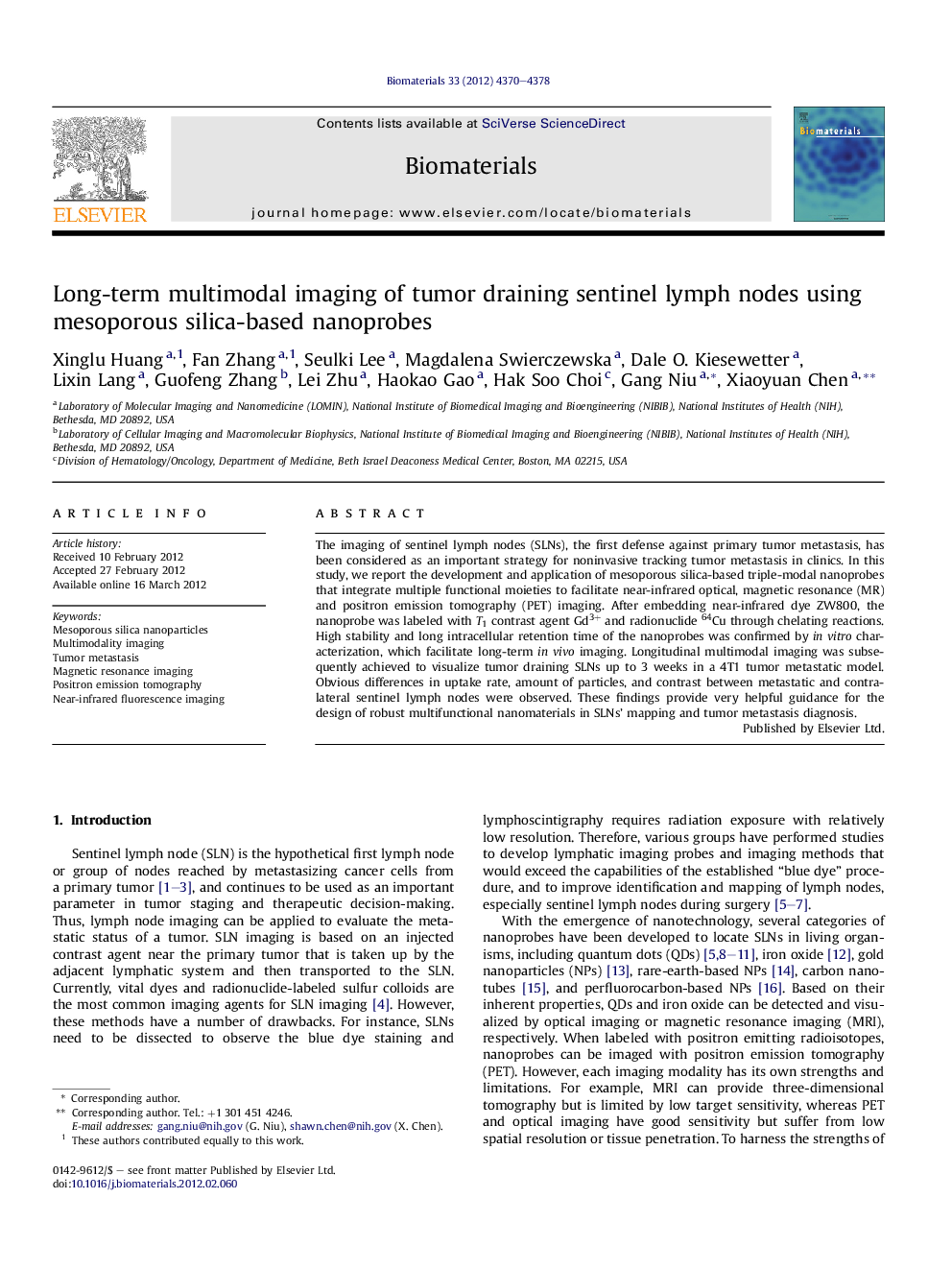| Article ID | Journal | Published Year | Pages | File Type |
|---|---|---|---|---|
| 10229249 | Biomaterials | 2012 | 9 Pages |
Abstract
The imaging of sentinel lymph nodes (SLNs), the first defense against primary tumor metastasis, has been considered as an important strategy for noninvasive tracking tumor metastasis in clinics. In this study, we report the development and application of mesoporous silica-based triple-modal nanoprobes that integrate multiple functional moieties to facilitate near-infrared optical, magnetic resonance (MR) and positron emission tomography (PET) imaging. After embedding near-infrared dye ZW800, the nanoprobe was labeled with T1 contrast agent Gd3+ and radionuclide 64Cu through chelating reactions. High stability and long intracellular retention time of the nanoprobes was confirmed by in vitro characterization, which facilitate long-term in vivo imaging. Longitudinal multimodal imaging was subsequently achieved to visualize tumor draining SLNs up to 3 weeks in a 4T1 tumor metastatic model. Obvious differences in uptake rate, amount of particles, and contrast between metastatic and contra-lateral sentinel lymph nodes were observed. These findings provide very helpful guidance for the design of robust multifunctional nanomaterials in SLNs' mapping and tumor metastasis diagnosis.
Keywords
Related Topics
Physical Sciences and Engineering
Chemical Engineering
Bioengineering
Authors
Xinglu Huang, Fan Zhang, Seulki Lee, Magdalena Swierczewska, Dale O. Kiesewetter, Lixin Lang, Guofeng Zhang, Lei Zhu, Haokao Gao, Hak Soo Choi, Gang Niu, Xiaoyuan Chen,
